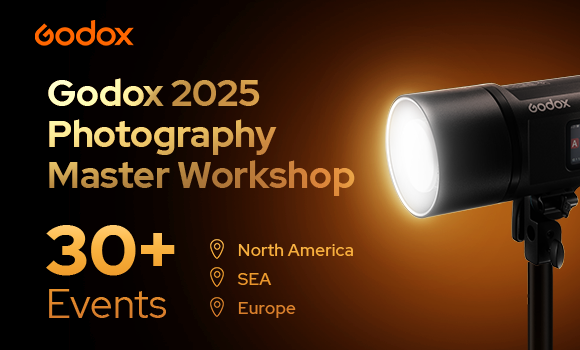Speedlight in studio
A speedlite flash unit allows you to add more light to a scene and control subject illumination. They are useful in low light conditions, but can also transform images in bright sunny conditions by flling in shadows and helping to balance exposure throughout the scene.
This time I wanted to use it in the studio and for that I tested the new Godox flash, the V860III. This new model keeps all the original features and other interesting new ones, such as the front modeling light, with a power of 2W, balanced at 5300 ºK, with 10 levels of brightness adjustment.
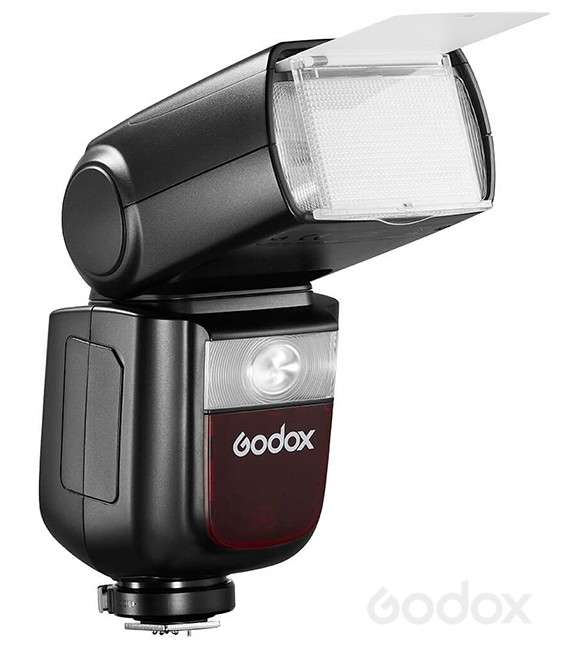
I started by using the flash without any light modifer. I placed it frontally over the camera to achieve what is called a "Paramount" or "Butterfly" lighting scheme. This lighting scheme produces a small shadow over the lips in the shape of a butterfly, hence its name. It was also often used in the Hollywood studios of the 40's, with hard, direct light sources. In this case, it is the light produced by a speedlite without accessories, the background was far away and so it was a bit darker. And the shadow of the model's body was hidden behind her.
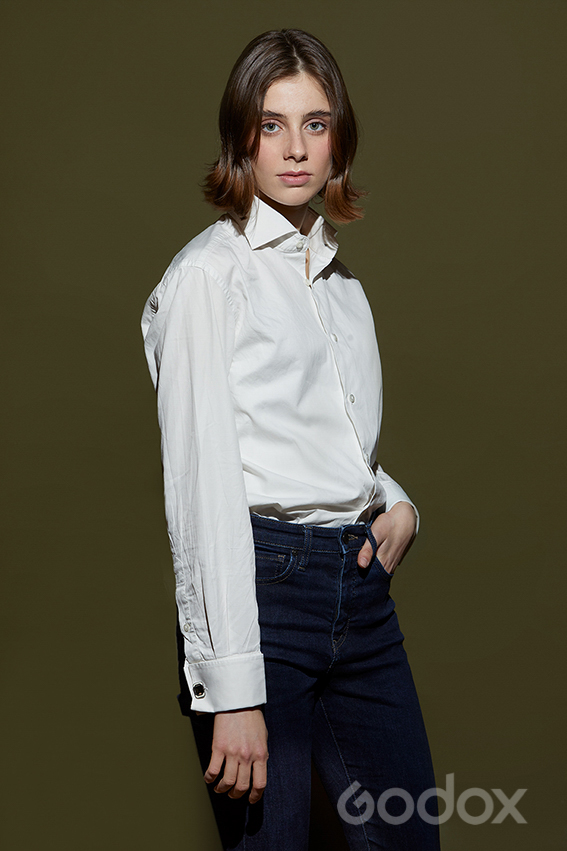
Lighting diagram I
The difference with the following image is that I moved the flash to the left of the camera and in an oblique direction to the model. I then placed a conventional 100x100 diffuser in front of the flash and thus achieved a larger "apparent area" of lighting. The larger the size of the light source, the softer the quality of the light and the lower the contrast and saturation of the colors.
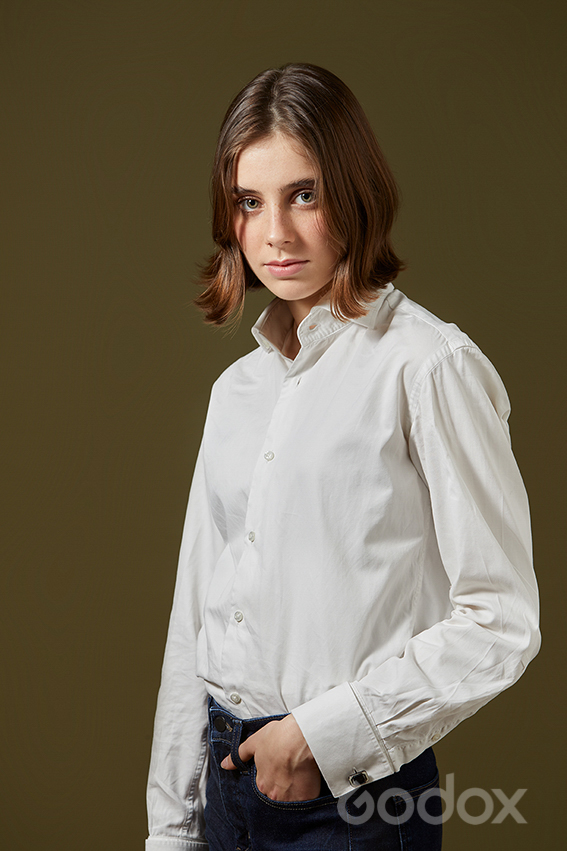
Lighting diagram II
Then I wanted to see the performance of this flash with a beauty scheme. I placed the flash again in oblique frontal position, as in the first picture, but this time I placed the diffuser in front of it and below the model I put a white reflector to decrease the overall contrast.
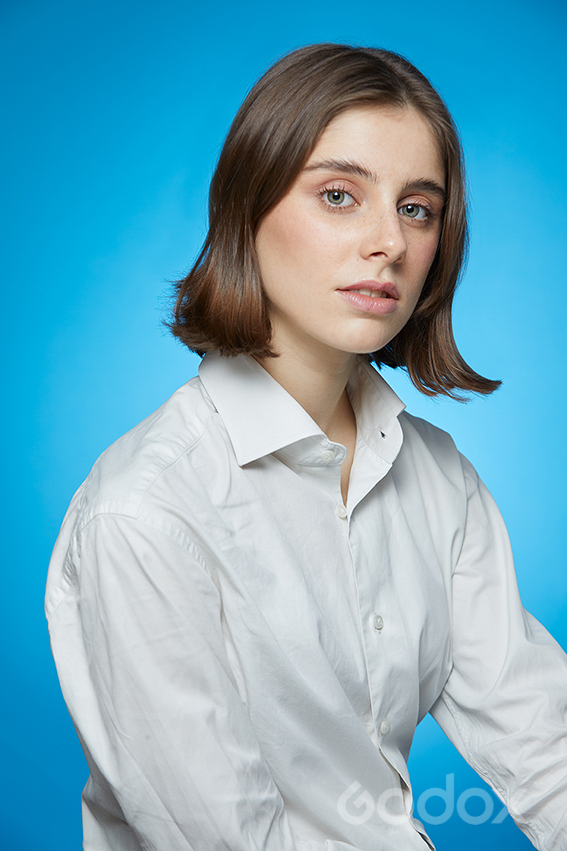
Lighting diagram III
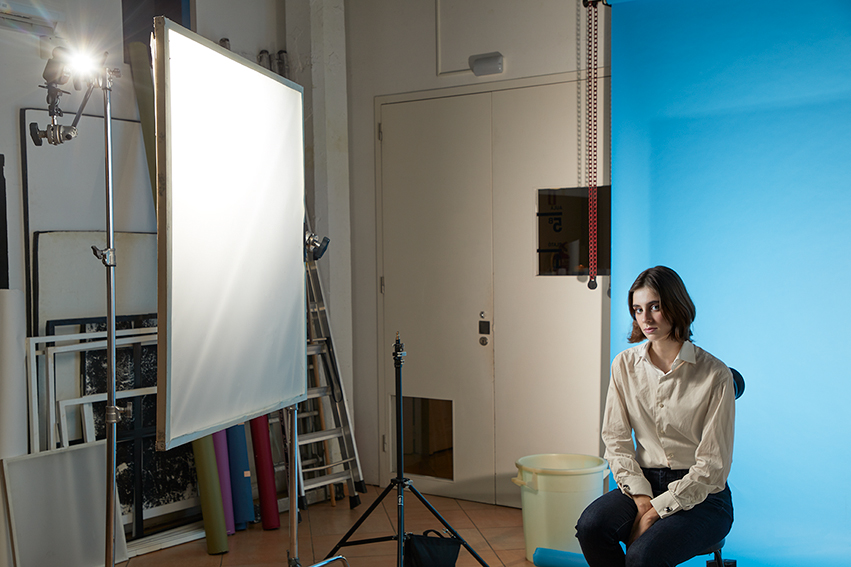
The background was a bit dark and to make it lighter, with a slight circular gradient, I decided to have a second flash unit. I placed a Godox AD300 Pro since I didn't have another V860III unit. The amazing thing about the Godox system is that I can sync them in different ways. This flash maintains its control options as a transmitter to easily control other Godox flashes remotely within the Godox wireless X system. It can also be remotely controlled by another Godox V860III flash or any other Godox flash with Master function.
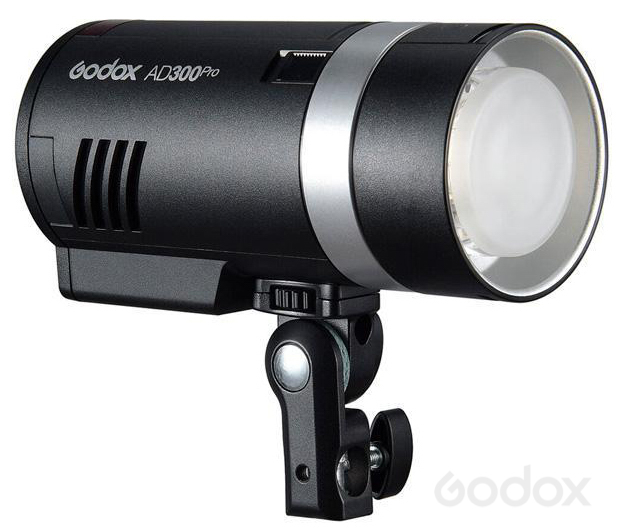
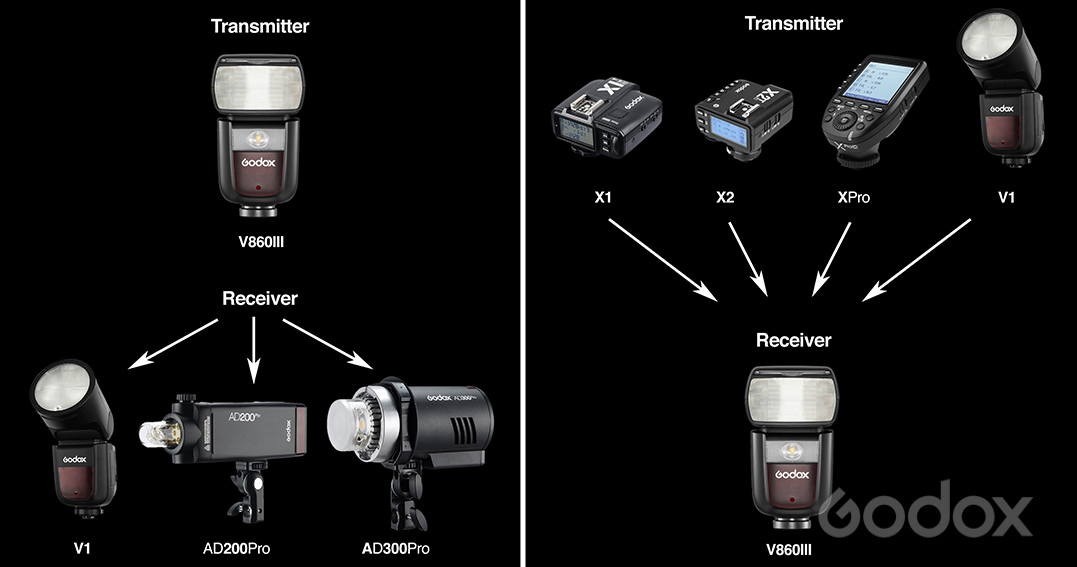
The next step was to recover some volume and for this I moved the light laterally and placed it a little higher than the model's height. I placed the diffuser again in front of the flash but this time I placed a big white reflector on the right to illuminate the back.
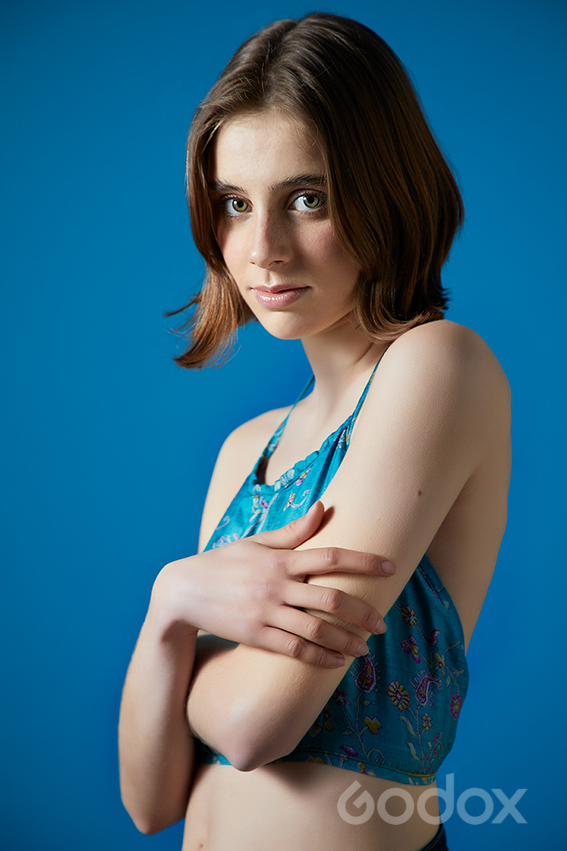
Lighting diagram IV
The next version only changes the clothes and the background, but to make the background somewhat darker, I moved the model and the light away from the background. According to the law of "the inverse of the square of the distance", the loss of light intensity is inversely proportional to the square of the distance. Hence, as you move the light away from the background, the background becomes darker.
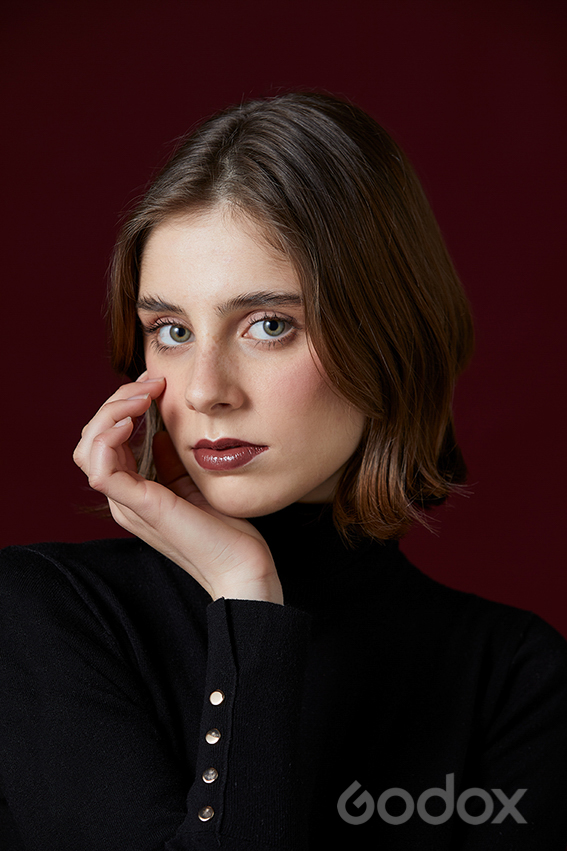
Lighting diagram V
To finish the shooting I tried another fantastic flash from Godox, the Macro Ring Flash MF-R76. For medium shots the result is amazing! I placed a diffuser behind the model with a second flash behind the diffuser which eliminated the small wraparound shadow of this type of ring flash. The frontal glow it produces on the skin is very nice and leaves the face very flat as well as glowing.
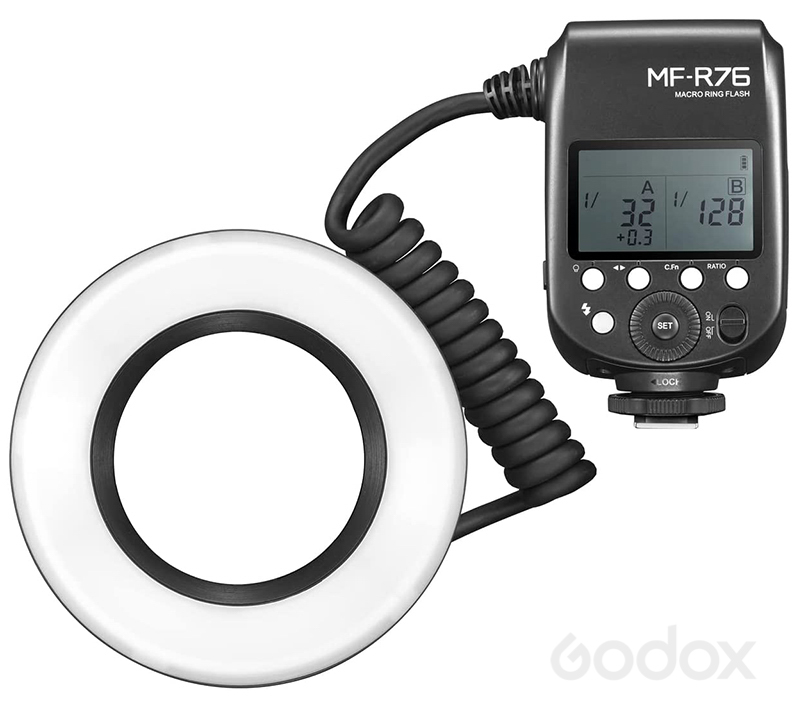
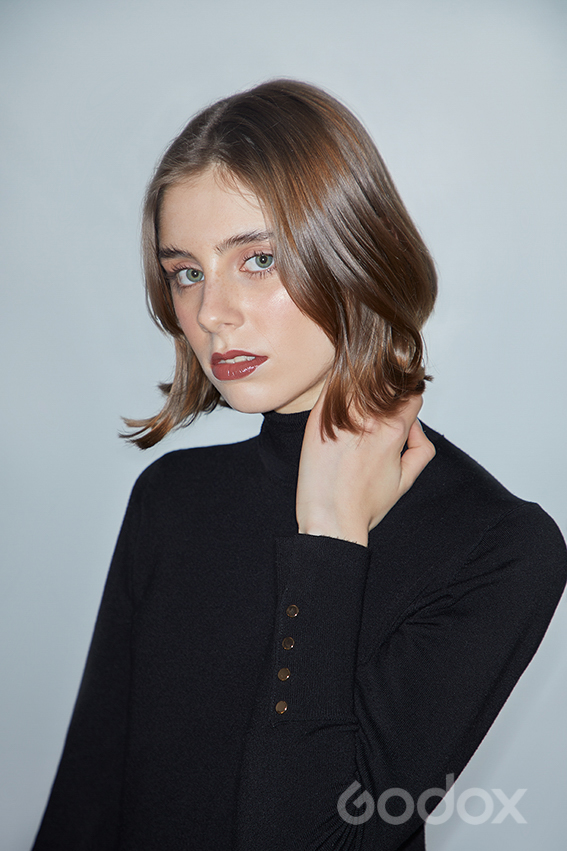
Lighting diagram VI
Finally, I turned up the power of the flash behind the diffuser paper and thus achieved a lighter, brighter and more gradient background.
It is very interesting how versatile these handy little flashes are. The Godox V860III, on a single charge of battery power, delivers up to 480 shots at full power with a recycle rate of only 1.5 seconds, and it uses the same battery as the Godox V1 round head flash, with the Godox VB26 rechargeable lithium battery being one of the responsible for the improved performance.
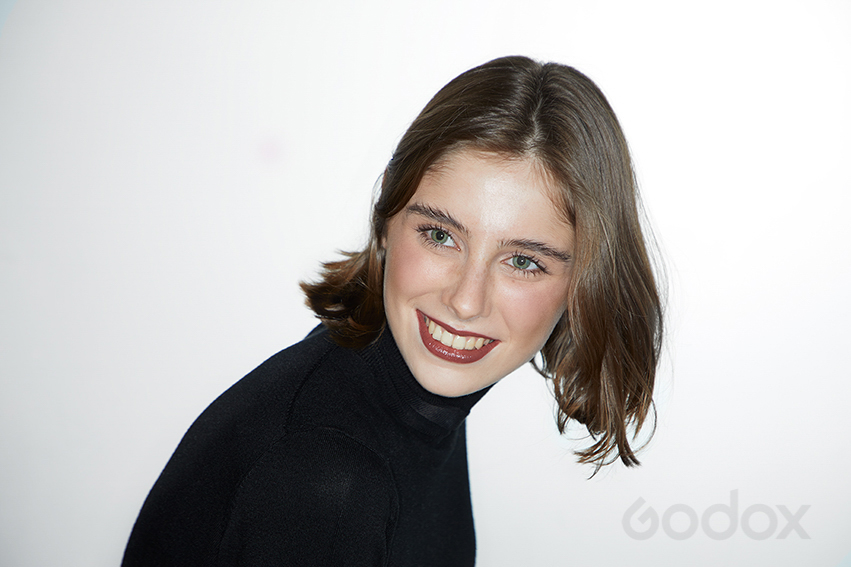
Lighting diagram VI
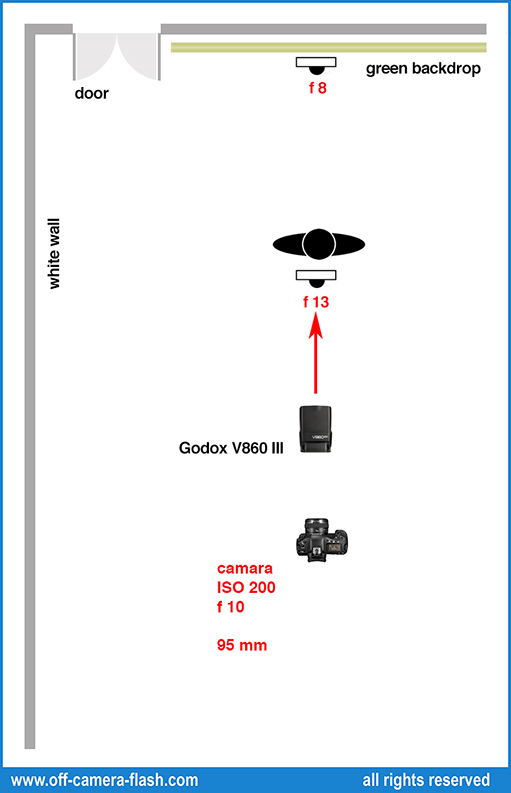
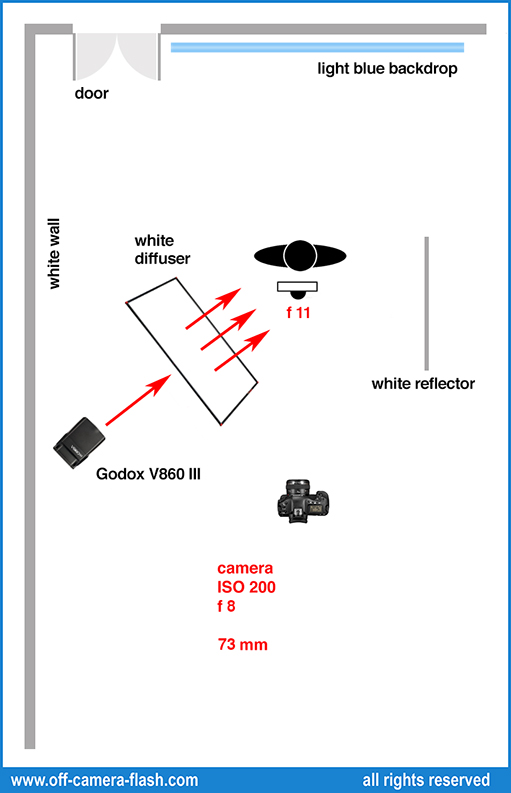
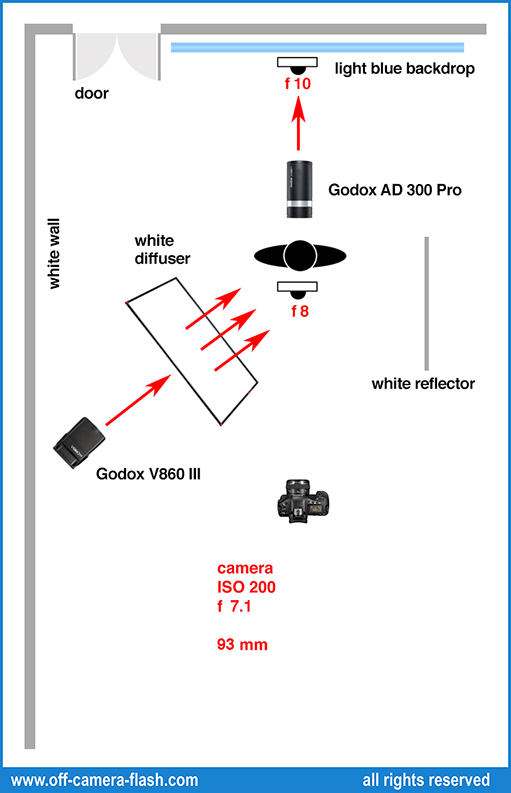
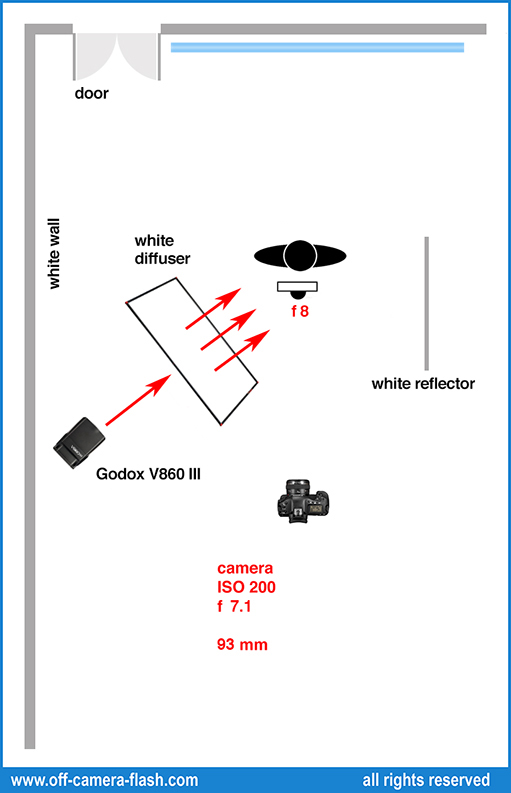
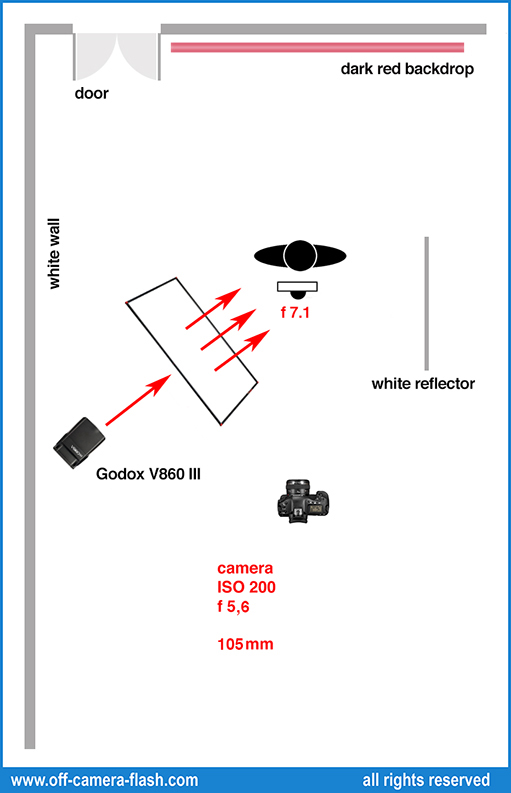
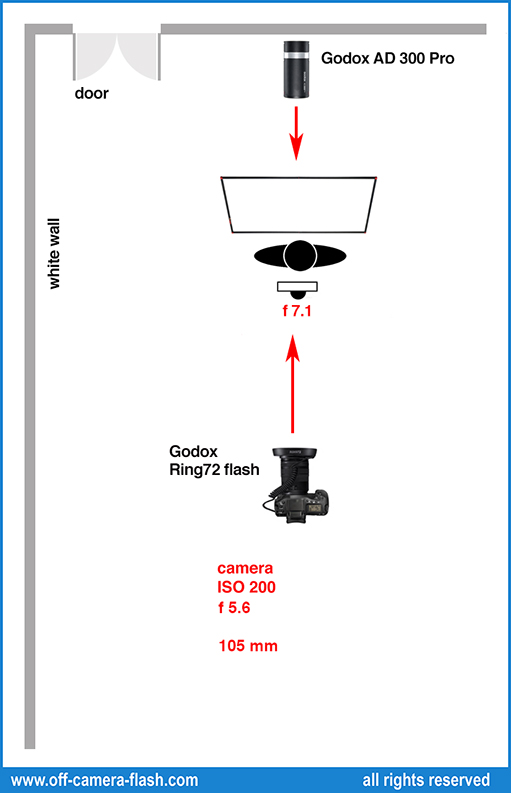
All rights reserved © Marcelo Isarrualde
No part of this publication may be reproduced in any form without the written permission of the author.
